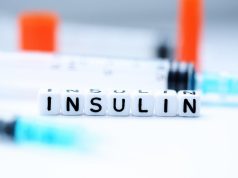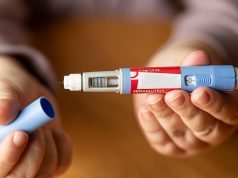Serum 25(OH)D3 linked to glucose-stimulated insulin secretion, β-cell function
MONDAY, June 15, 2015 (HealthDay News) — Serum 25-hydroxyvitamin D3 (25[OH]D3) is associated with glucose-stimulated insulin secretion and β-cell function in individuals with newly diagnosed type 2 diabetes, according to a study published online June 5 in the Journal of Diabetes Investigation.
Yan Yang, from the Sichuan Provincial People’s Hospital in Chengdu, China, and colleagues recruited 97 newly diagnosed type 2 diabetes patients and 69 healthy controls to assess 25(OH)D3. The authors determined 25(OH)D3 using high pressure liquid chromatography. The correlations of 25(OH)D3 with insulin resistance and β-cell function were assessed.
The researchers found that patients with newly diagnosed type 2 diabetes had much lower serum 25(OH)D3 (P < 0.01); the prevalence of hypovitaminosis 25(OH)D3 in patients with diabetes was 62.9 percent. Among patients with diabetes, those with hypovitaminosis 25(OH)D3 had higher hemoglobin A1c (HbA1c) and area under the curve for glucose (P < 0.01) and lower homeostasis model of assessment (HOMA)-β, early-phase insulin secretion index, and area under the insulin curve. There was an independent positive correlation for serum 25(OH)D3 with early-phase insulin secretion index and area under the insulin curve (P < 0.05), but not with HOMA-insulin resistance or HOMA-β. In both groups, triglycerides, HbA1c, and early-phase insulin secretion index were independent factors associated with serum 25(OH)D3.
“Serum 25(OH)D3 is not correlated with basal insulin resistance or β-cell function but is significantly positively correlated with glucose-stimulated insulin secretion and β-cell function,” the authors write.
Copyright © 2015 HealthDay. All rights reserved.








